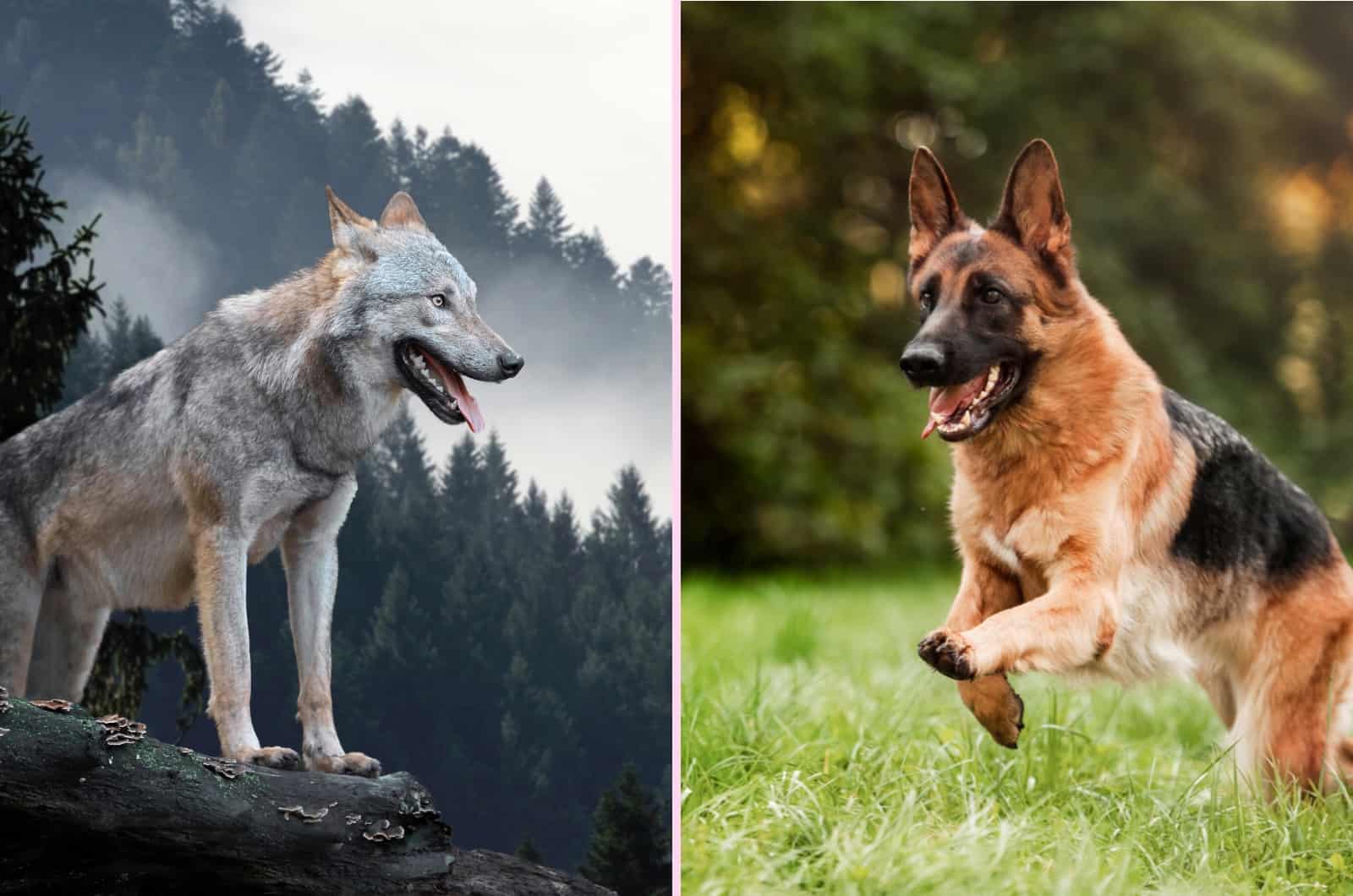Ever wished you could own a wolf that acts like your German shepherd dog? There are some takes on it, but the whole process of creating the right GSD wolf mix is hard. The results have been hit-and-miss for a long time, so it is best to stick with what works.
To reassure you even further that owning a wolf is not smart or useful, I decided to write about some differences between wolves and German shepherd dogs. My only goal here is to show you that you would be missing your GSD within a week.
Is it that bad, you might ask. Well, wolfdogs are not a breed, first of all, so there are no predictable features in fifty-fifty mixes. Seeing all those YouTube videos of people owning wolves is very misleading. Here is the explanation.
GSDs Are Descendants Of Wolves But They Might As Well Not Be
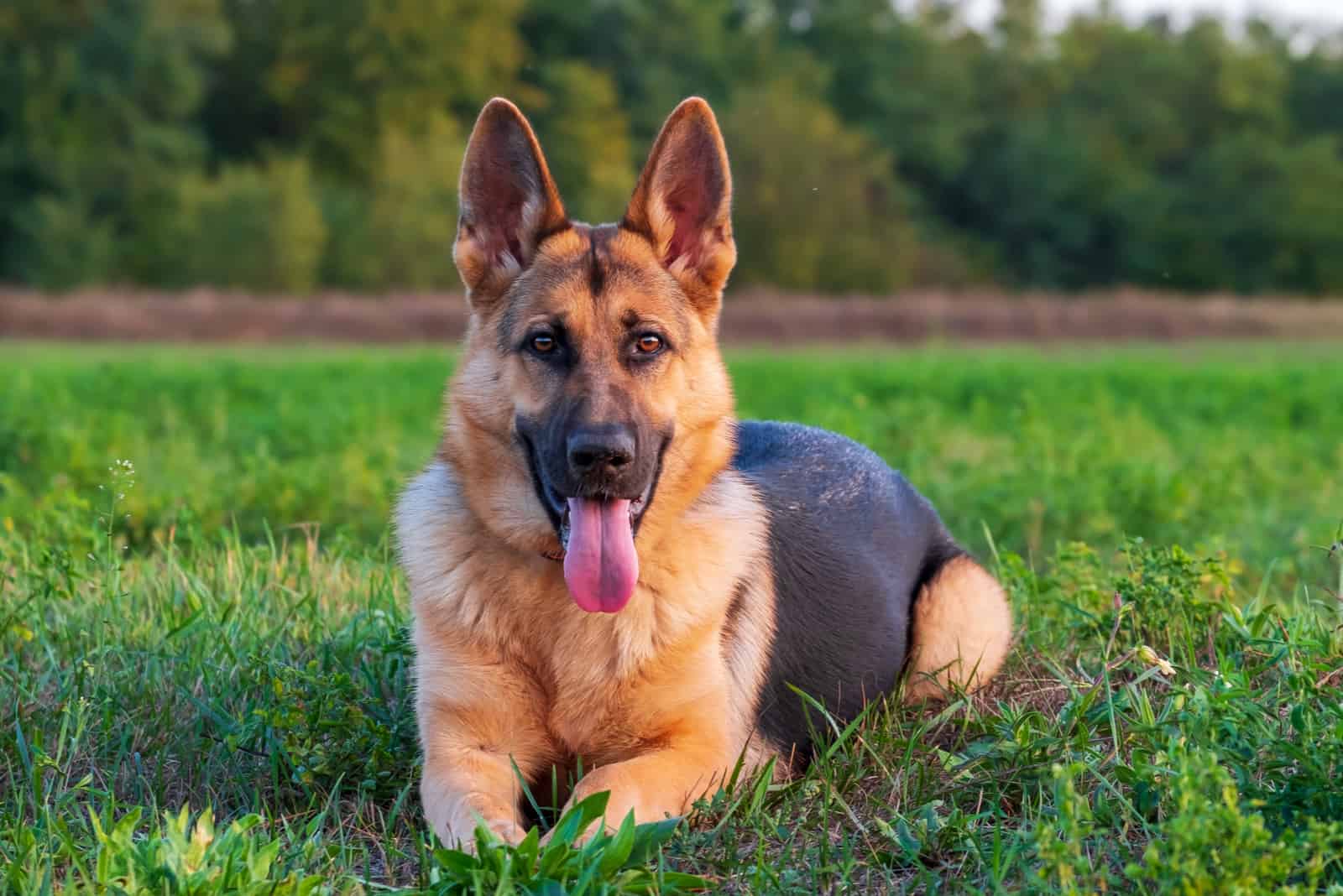
The German shepherd dog has some resemblance to its ancestor, the wolf. They have that luxurious coat, pointy muzzle, erect ears, and a gait that cannot but scream “I’m a wolf!”.
Some evidence suggests that the journey of domesticated dogs started more than twenty thousand years ago. It has been a long adventure, getting dogs to the point they are today. Perhaps German shepherds’ appearance triggers some primal want for a wolf in our life.
No matter, the abundance of dog breeds we humans created over the course of centuries is quite an accomplishment. Why do we then crave going back to the roots? I guess we overcomplicated stuff and some simplicity is missing from our lives.
Most of the disparities are clearly visible and have to do with physical appearance. The even larger differences, however, can be observed in the temperament of the two Caninae canis exemplars.
Although the bloodlines of wolves and domesticated dogs took different paths tens of thousands of years ago, the percentage of shared DNA between wolves and German shepherds is ninety-nine point eight.
How is it that wolves and GSDs are so unlike each other then? Selective breeding is the answer. Once humans realized that choosing wolves with particular traits and breeding them yielded better results than domestication, it became a game of genetics.
The differences between wolves and German shepherd dogs are bigger than between wolves and some other dog breeds, like Siberian Huskies or Malamutes. I guess the stubbornness and unruly nature of those two showcases the wolf in them.
German Shepherd VS Wolf, A Clash Of Distant Cousins
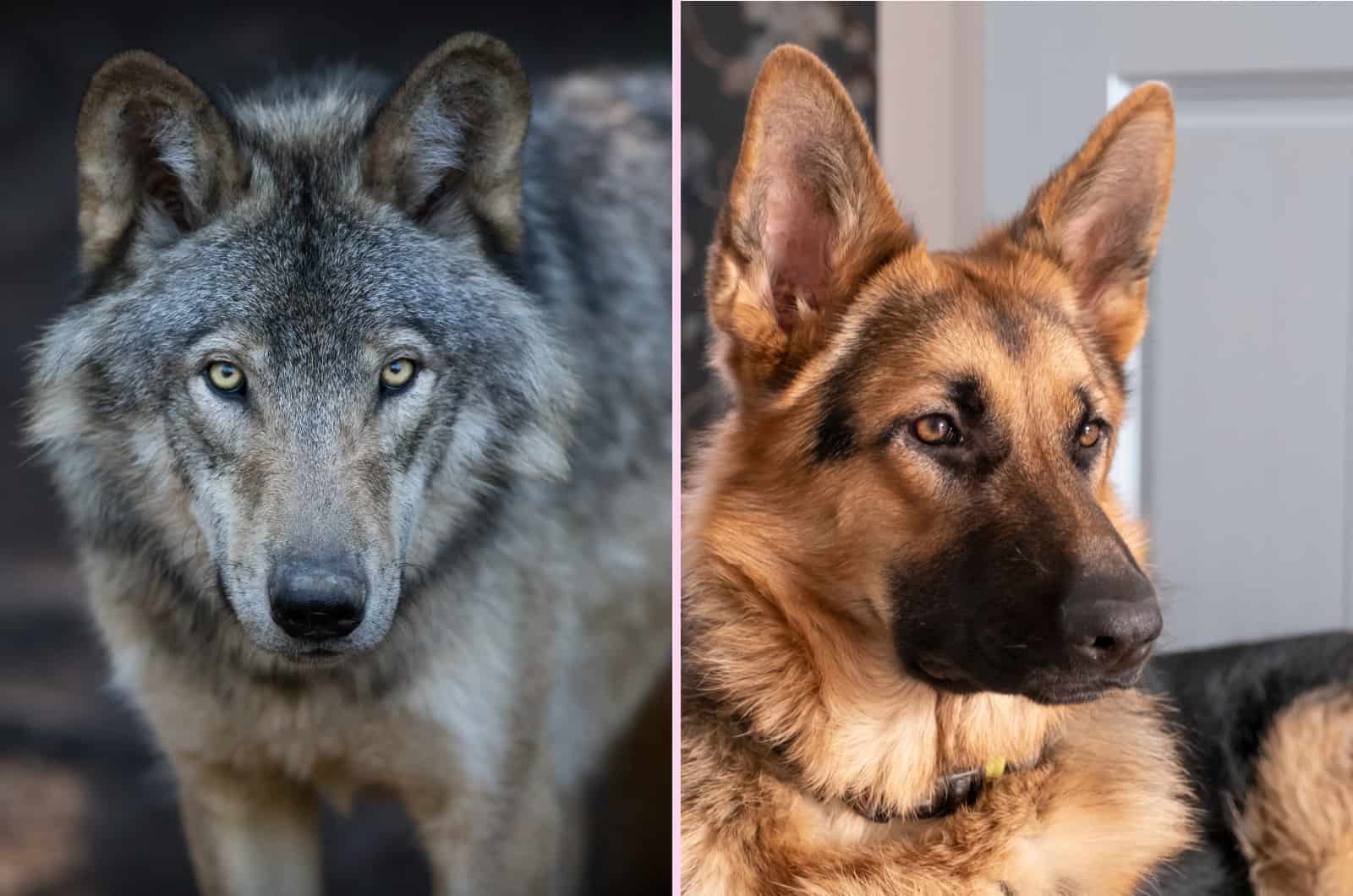
Just like humans share ninety-eight to ninety-nine percent of their DNA with chimpanzees but look or act completely different (mostly), German shepherds and wolves are genetically almost identical, but in reality, have few things in common.
We are visual beings, so we first notice the distinction in appearance. However, our ears and instinct catch up eventually and we see how dissimilarly dogs and wolves behave. If you have not seen the clue, we are starting with physical differences.
For the sake of simplicity, I will be comparing gray wolves to German shepherds. This is because it is the largest non-domesticated type of Canidae.
Physical Differences Between Wolves And German Shepherd Dogs
Adult male wolves can be as tall as thirty inches and six point-six feet long. Its average weight of a hundred pounds or more is a sight to behold. Female wolves are smaller by a fifth of an adult male’s height and weight.
Compared to a male German shepherd’s five inches lower height and thirty pounds lighter weight, answering who would win in a fight is easy — the wolf.
Head, muzzle, and ear shape are comparable, but the wolf has smaller eyes and a more linearly shaped head. Appealing to humans was a matter of evolution, so the GSD has a much rounder head.
Other than the big difference in body size, the bones of a wolf are much tougher and denser than a German shepherd’s. Even the teeth of a wolf are stronger and bigger than those of a dog. A wolf’s nose is more sensitive and acute than even a Beagle’s sniffing apparatus.
Height and length-wise, it is easy for a wolf to tower over a GSD. Even the tail is sickle-shaped as opposed to a German shepherd’s bushy tail. However, this part of the body is similar enough to call it “even”.
Going back to the eyes, wolves generally have a yellow eye color. Just like with dogs, they have variations like orange, hazel, green, or even blue.
However, the wider variety of eye colors in dogs is much more common than in wolves. Brown eyes in a wolf are more than rare but common in GSDs. Here are all the German shepherd eye colors. What colors do they see, though? Are GSDs color blind?
Feet play a major role in the wolf’s ability to cover large distances in extreme weather. That is why a German shepherd’s foot is tiny compared to a wolf’s. The two middle toes on the wolf’s feet serve a practical purpose — big leaps. They are useful in high-speed prey chases.
Wild Animal Temperament VS The GSD Mind
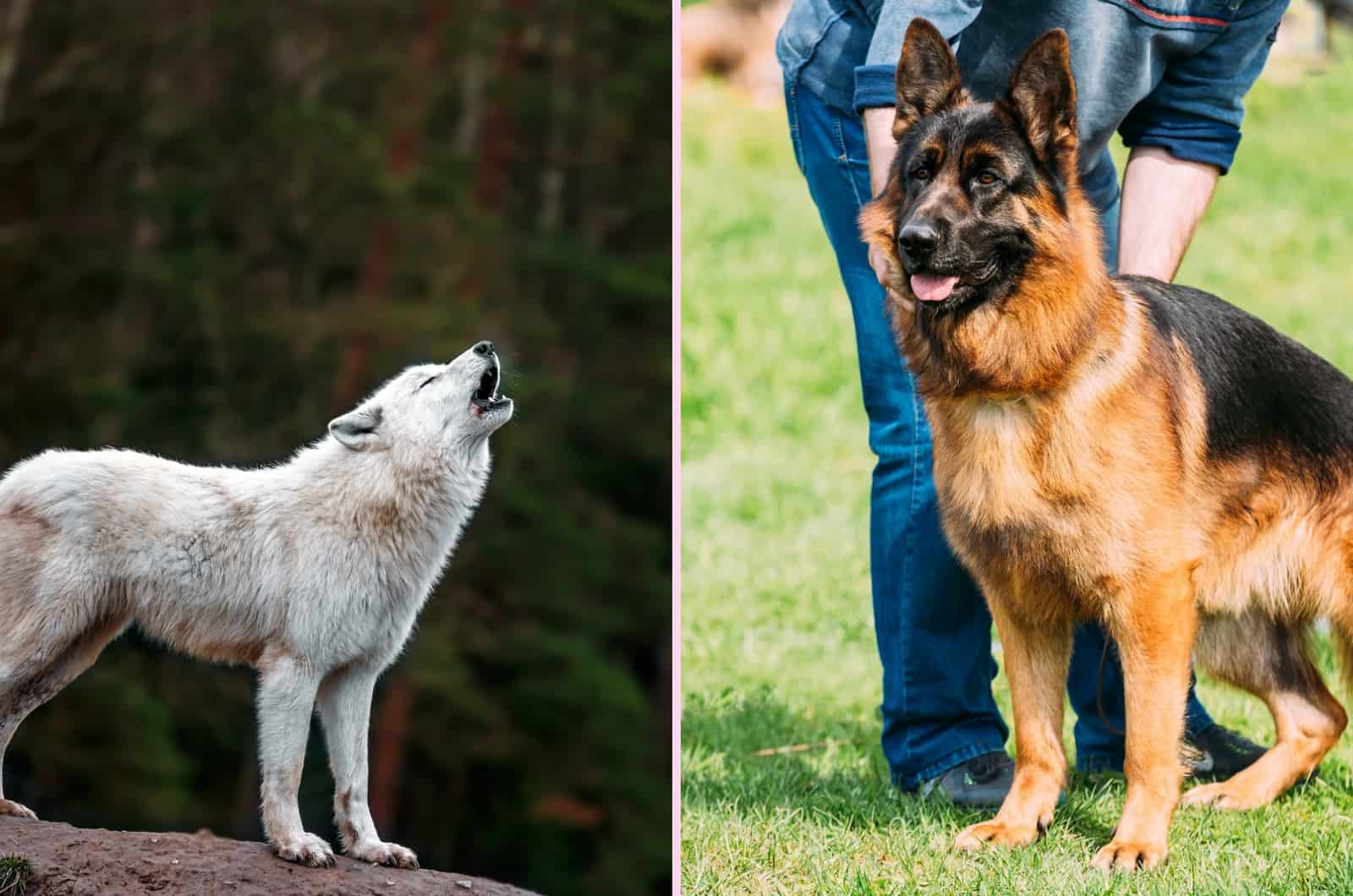
Studying wolf behavior is not as easy as doing it with domesticated dogs. German shepherds count as one the most intelligent breeds around, but still are not better problem solvers than wolves.
Held in high regard as wonderful companions, German shepherds are usually very loyal, affectionate with the family, and great guard dogs. A wolf has no need for humans, which makes it completely independent.
Because of that, they will rarely develop an attachment to a human being. Regardless of its “most popular dog” title at one point in time, the German shepherd breed’s nature is aggressive compared to other, more laid-back ones. Still, it is nothing compared to a wolf.
A wolf will rarely attack a human, but if it does, it is likely a kill. Wolves like efficiency and their movements and energy are never wasted. Food is scarce in the wild, so preserving those calories is crucial. The “shy” nature of wolves makes them a real sight for sore eyes.
Even with wolves that are used to human interaction, obedience is not a strong suit. Grey wolves, jackals, coyotes, or any other type of wild dog will have a rapport with you as long as it favors them.
German shepherd puppies love playing. It is crucial for their development and socialization. Similarly, wolf puppies care for playtime, but theirs carries a much more serious and dangerous precedent.
Wolf pups learn how to fight, communicate, and survive by playing with each other and, occasionally, the adults. The cutthroat world wolves live in requires the puppies to grow up quickly, so playtime is much more important than for dogs.
Feeding A Wolf VS Feeding A German Shepherd

You might be thinking, “My German shepherd is a carnivore too, why would the diet be so different?”. Actually, GSDs and all other dogs are omnivores. Their eating of everything, and not just meat, stems from the fact they evolved with humans, and humans were gatherers.
A wolf’s diet consists of substantially larger protein content. Dogs on such a nutrition regime would probably poop without stopping. The amount of calories a wolf can consume surpasses a dog’s stomach capacity.
In the wild, you do not eat regular meals three times a day. Instead, you wait for your turn and gulp down as much food as you. Wolves can hold up to twenty pounds of food in their stomachs, so compare that with a few cups of food for your dog.
On the other hand, wolves would become malnourished with the lack of nutrients the best GSD dog food contains. There is also proof wolves and dogs have different enzymes, which means their diets are not interchangeable.
Do not mistake raw food diets for German shepherds with a wolf diet. Those are not similar, since we always buy germ-free, certified produce for our dogs. Wolves have vastly greater resistance to pathogens and hardly ever get sick by eating bad food.
The wolf’s bite force is multiple times stronger than any breed of dog’s, so bones with high fat and vitamin/mineral content are easier to crunch. A comprehensive meal for a wolf is leaving no carcass behind.
How Wolves Breed VS Dog Breeding
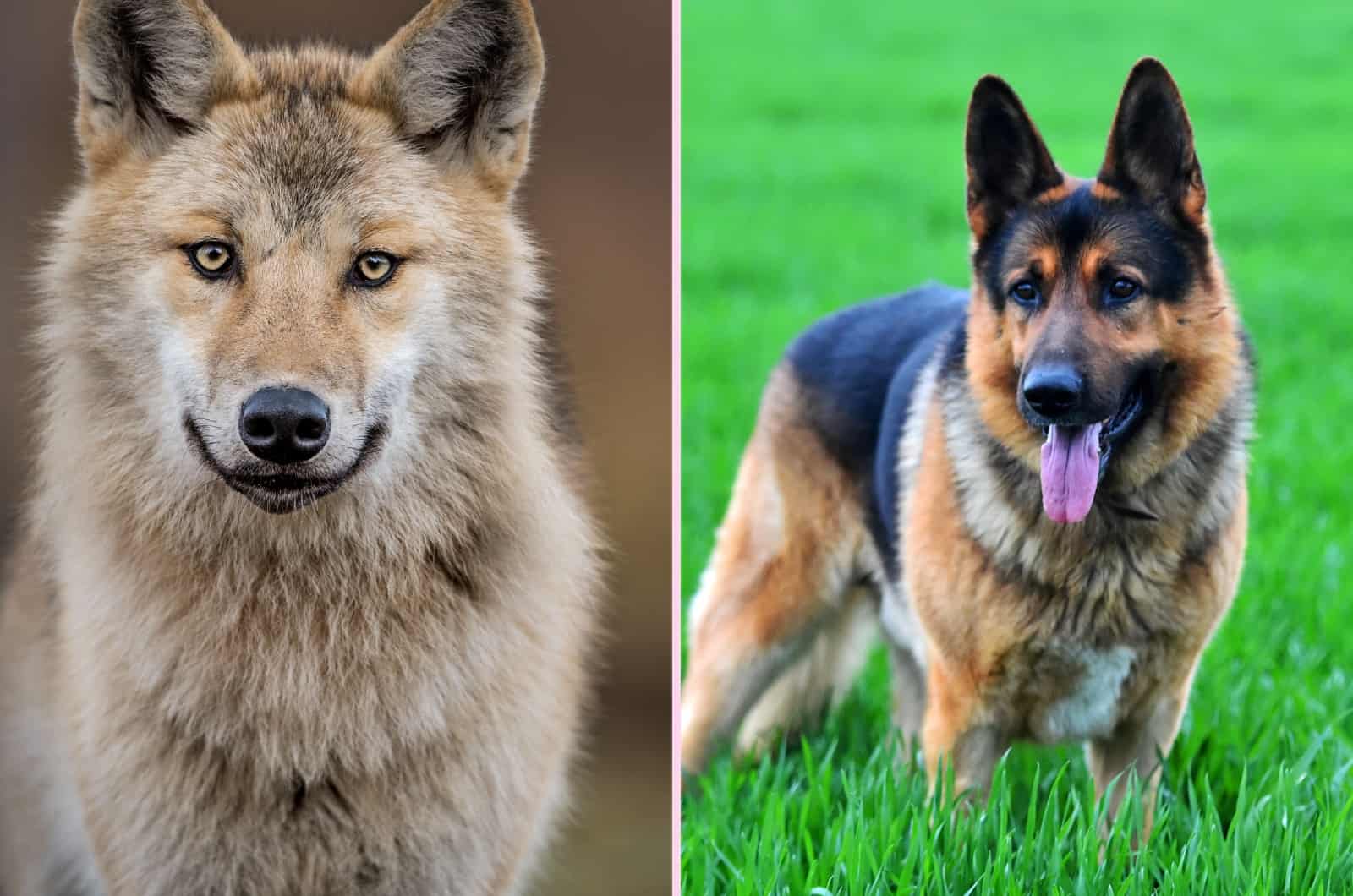
In the wild, wolves only breed once per year. That means the litter size has to be big. Usually, a female will give birth to four or five pups, but there are instances where fewer or more than that are born.
Sexual maturity and mental maturity come sooner for the wolf. German shepherd puppies go through weaning at eight weeks of age, just like wolves. The difference is that the brain and all other body systems develop much faster in a wolf.
Once a wolf pup is born, both the mother and father will care for it. This is a common familial structure that dogs do not know. A male dog never cares about his offspring. This proves that, despite being pack animals, dogs are closer to their human pack than their own.
Wolf Health VS German Shepherd Health
Every dog lover is aware that all breeds suffer from some health problems. With German shepherds, it is hip dysplasia or degenerative myelopathy, or some other condition that can shorten its lifespan.
Wolves are healthier and more resilient than German shepherds. Even though the GSD cold tolerance is decent, wolves are used to living in subfreezing temperatures. Their resistance to common bacteria, viruses, and parasites is also superior.
Despite Max von Stephanitz’s effort to make the German shepherd dog breed free of health issues, unethical breeders and harmful breeding practices brought the GSD to a low point. Hopefully, things will get back on track.
Conclusion
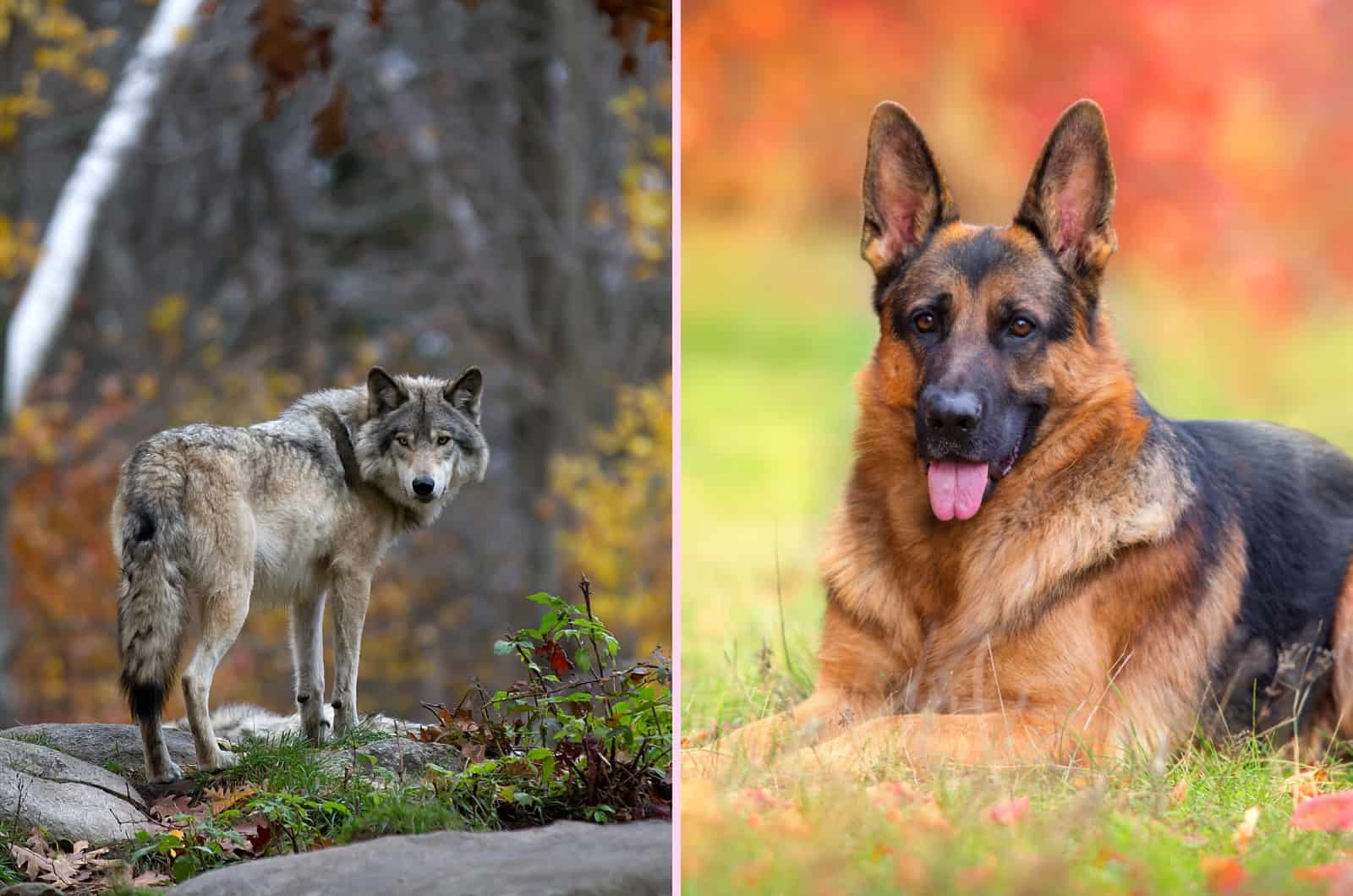
The differences between wolves and German shepherd dogs are greater than you imagined I presume. Even if you knew most of these things, putting them in one place and next to each other makes for a larger list than picking out individual contrasting traits.
No matter how closely related by genetics, German shepherds are a far cry from wolves. However, the human touch made them better companions and friends, so we traded their primal nature for a humanized experience.
